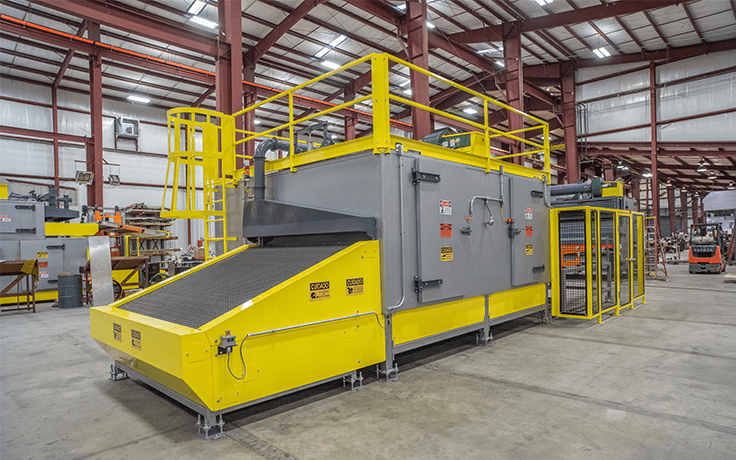Continuous Oven or Batch Oven?
Determining which Oven Type Suits Your Process Needs
In many manufacturing plants, the production process demands a thermal procedure requiring an industrial oven. Anyone tasked with overseeing process development for such a facility inevitably faces these questions:
- Which oven type is best for thermal processes, batch or continuous?
- What type of oven would be best suited for this particular production requirement?
Both types of ovens have a place in the manufacturing process, so there is no universal “right” answer to the first question. The answer to the second question is critical to production and process efficiency.
Batch Ovens
Batch ovens are well suited for inert-atmosphere and clean-room applications because they are closed-process machines; when the door is closed, the heated chamber is sealed. Batch ovens are best utilized for large parts that are difficult to run on conveyors, and for items with different sizes, shapes, weights, and thermal requirements.
Batch ovens typically require lower capital investment than continuous ovens, but they also demand greater manpower to operate because they must be manually loaded and unloaded.
Loading a batch oven normally involves racks or baskets for transferring the parts for thermal processing into and out of the unit. The grouping of parts in the oven can introduce one potential downside, particularly when you have identical items that need to reach identical setpoint temperatures: uneven heat distribution. Perimeter parts will tend to reach the target temperature first, then “soak” longer as the parts in the middle heat up. Perimeter parts can overheat, causing inconsistent quality.
When cooling is required, it adds time to the manufacturing process, since the same chamber must be cooled, then reheated for the next batch.
Continuous Ovens
Continuous ovens are more complex, require a higher initial investment, and call for more maintenance than batch ovens. But for mass-produced products that need systematic and consistent thermal processing, continuous ovens offer significant benefits that can deliver high ROIs over time.
Continuous ovens were developed for processing manufactured items on conveyors, so it’s understandable that they are ideally suited for such operations. Some of the features and options commonly found in continuous ovens include:
- Fixed-speed or indexed stop-and-go modes of operation
- Direct, consistent heat impingement on each part moving through
- Temperature monitoring and recording along length of chamber
- Automatic ingress and egress doors
- Variable temperature zones
- Separate heating and cooling chambers
- Direct, consistent cooling air on each part
Because continuous ovens don’t require repeated loading and unloading, or heating up and cooling down between each batch, labor and energy demands often are much lower than with batch ovens.
The consistent and even distribution of heated air — and cooled air, where required — reduces processing time and typically results in greater consistency in quality across parts and throughout production runs.
Summary
Deciding which type of oven is right for a particular application depends entirely on the thermal demands of the application.
For mass production of parts that are identical in shape and size and that are conveyed through a process that repeats constantly, a continuous oven will deliver the greatest possible efficiency with the least per-unit operational costs.
If the parts being processed have different sizes, weights and thermal requirements, or if production runs are small, a batch oven may be the best choice if there is some thermal latitude.
Other factors that must be taken into account include overall budget, available floor space, labor requirements and energy consumption. It’s wise to get your oven vendor involved in the decision process as early as possible so they can help you choose the best oven for your application.
